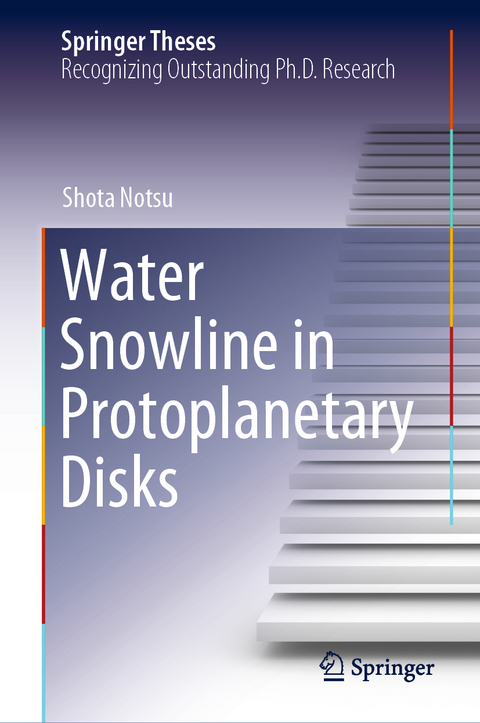
Water Snowline in Protoplanetary Disks
Seiten
2020
|
1st ed. 2020
Springer Verlag, Singapore
978-981-15-7438-2 (ISBN)
Springer Verlag, Singapore
978-981-15-7438-2 (ISBN)
This book presents pioneering work on a critical observational test of the planet formation theory based on the theoretical study of the water snowline, beyond which water takes the form of ice, in the protoplanetary disks – the place where planets are formed. Since the water snowline is thought to divide the regions of rocky and gas-giant planet formation, the location of the snowline is essential for the planet formation process.
The book proposes a novel method to locate the snowlines using high-dispersion spectroscopic observations of water vapor lines, which is based on in sophisticated chemical modeling and line radiative transfer calculations. The author obtained the water vapor distribution in the disks using the chemical reaction network, which includes photoreactions and gas–grain interactions. The simulated transition lines of water vapor in the disks demonstrate that relatively weak transition lines with moderate excitation energies are the best tracers of water snowline.
Furthermore, the author observed submillimeter lines of water vapor in a disk using ALMA (Atacama Large Millimeter/submillimeter Array) to obtain the upper limit of the line fluxes with the highest sensitivity to date. These unprecedented findings are important in locating the snowlines in the disks, and the method goes a long way toward achieving a comprehensive understanding of the planet formation processes as well as of the origin of water on rocky planets, including our Earth, based on future observations using ALMA and SPICA (Space Infrared Telescope for Cosmology and Astrophysics).
The book proposes a novel method to locate the snowlines using high-dispersion spectroscopic observations of water vapor lines, which is based on in sophisticated chemical modeling and line radiative transfer calculations. The author obtained the water vapor distribution in the disks using the chemical reaction network, which includes photoreactions and gas–grain interactions. The simulated transition lines of water vapor in the disks demonstrate that relatively weak transition lines with moderate excitation energies are the best tracers of water snowline.
Furthermore, the author observed submillimeter lines of water vapor in a disk using ALMA (Atacama Large Millimeter/submillimeter Array) to obtain the upper limit of the line fluxes with the highest sensitivity to date. These unprecedented findings are important in locating the snowlines in the disks, and the method goes a long way toward achieving a comprehensive understanding of the planet formation processes as well as of the origin of water on rocky planets, including our Earth, based on future observations using ALMA and SPICA (Space Infrared Telescope for Cosmology and Astrophysics).
Introduction.- Modeling Studies I. The Case of the T Tauri Star.- Modeling studies II. The Case of the Herbig Ae Star.- Modeling Studies III. Sub-millimeter H216O and H218O Lines.- ALMA Observation of the Protoplanetary Disk around HD 163296.- Summary and Future Works.
| Erscheinungsdatum | 04.09.2020 |
|---|---|
| Reihe/Serie | Springer Theses |
| Zusatzinfo | 51 Illustrations, color; 2 Illustrations, black and white; XIII, 134 p. 53 illus., 51 illus. in color. |
| Verlagsort | Singapore |
| Sprache | englisch |
| Maße | 155 x 235 mm |
| Themenwelt | Naturwissenschaften ► Physik / Astronomie ► Astronomie / Astrophysik |
| ISBN-10 | 981-15-7438-3 / 9811574383 |
| ISBN-13 | 978-981-15-7438-2 / 9789811574382 |
| Zustand | Neuware |
| Haben Sie eine Frage zum Produkt? |
Mehr entdecken
aus dem Bereich
aus dem Bereich
die Geschichte und Erforschung unserer Galaxie
Buch | Hardcover (2023)
C.Bertelsmann (Verlag)
30,00 €
Buch (2024)
Spektrum der Wissenschaft (Verlag)
6,50 €
Wie astronomische Fotografien unsere Sicht auf die Welt verändern
Buch | Hardcover (2023)
Springer (Verlag)
39,99 €


